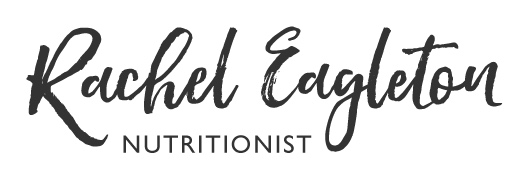Low FODMAP Ratatouille (gluten-free, dairy-free, nut-free)
/Recipe reproduced with permission from Glenda Bishop. Glenda is a Registered Nutritionist, wellness coach, neuroscientist and educator.
Ratatouille is one of my favourite vegetable dishes. It’s got so much flavour that you almost don’t know what to do with it, yet it’s so easy to cook. Seriously, just chop up the veggies, stick them in a pot and let them cook. Now that’s my kind of cooking. And you can make ratatouille low FODMAP quite easily with just a few small changes.
In terms of ingredients, the main FODMAP sources in a regular ratatouille are onion and garlic. These are easy to work around though. Just use green onion tops instead of the onion and use garlic-infused olive oil instead of the garlic. Flavour problems solved!
The other potential issue has to do with the amount of veggies included. When zucchini is present in very large amounts, the levels of fructans can get a bit high. But that’s easily solved by weighing the zucchini so you don’t overdo it. Aside from that, all of the other ingredients are fine.
Now, I already said I liked ratatouille because it’s so easy to make and tastes amazing, but I also like it because it’s incredibly versatile, making this a winner of a dish (see the serving ideas below). To start with, you can eat it on its own as a very chunky soup or stew. But if you want to give it a bit more oomph, serve it alongside cooked meats (especially lamb or chicken) and mashed potatoes or rice. It’s also delicious with cooked eggs and can be used a base for making baked eggs. Ratatouille can also be used as a pasta sauce, on its own or in combination with proteins such as cheese, meats, fish or brown lentils.
You can also freeze ratatouille, although the vegetables will be a tad mushier when they’re defrosted, but there are many ways you can use it where that won’t matter at all (e.g. pasta sauce or baked eggs). So what are you waiting for? How about making up some low FODMAP ratatouille today.
Low FODMAP Ratatouille
Makes: 6 serves
Serving size: 1/6 of recipe (about 1 cup)
Special equipment: just a large pot with a lid
Ingredients
1 tbsp extra virgin olive oil
2 tsp garlic-infused olive oil (see notes)
330g eggplant (1 medium), diced
480g zucchini (2 medium), diced
250g red capsicum (2 medium), died
300g tomatoes (3 medium), diced
1 1/2 cups green onion tops, sliced
1 1/4 cups passata (see notes)
2 bay leaves
Salt and pepper to season
1/4 cup chopped fresh parsley
Instructions
Heat oils in a large deep pot (mine holds 4L). Add the eggplant and zucchini, cook stirring for 2 minutes. Add the capsicum and tomatoes, cook stirring for another 2 minutes.
Add the green onions, passata and bay leaves. Mix and then cover the post and simmer for 30 minutes.
Remove from the heat and stir in the fresh parsley. Serve as desired.
Serving suggestions:
Use as a side dish for cooked meats, along with mashed potatoes or rice. It goes very well with lamb or chicken.
Brighten up your eggs by serving it with fried or poached eggs and toast. Or use it as a base for baked eggs.
Use as pasta sauce - bulk it up with some protein by adding cheese, cooked meats, fish or brown lentils.
Eat it as a thick soup and dunk in some day-old bread or toast.
Ingredient Notes:
Based on the recommended portion sizes of individual ingredients in the Monash University Low FODMAP Diet app at the time of publication, this recipe should be low FODMAP provided that the recommended serving size for this recipe is not exceeded.
Garlic-infused olive oil is a low FODMAP ingredient because FODMAPs are not soluble in oil. It is safest to use a commercially-prepared garlic-infused olive oil. I like to use the Cobram Estate Garlic Infused Extra Virgin Olive Oil, which you can find in supermarkets.
Make sure that you only use the green tops of the spring onions (scallions), since the white bits are high in fructans.
When selecting a passata (tomato puree), check the ingredients to make sure it is just tomatoes and salt, with no added ingredients such as garlic, onions or flavours.
This recipe is naturally gluten-free, dairy-free and nut-free. However, if you have an allergy to any of these items, or have coeliac disease, please check the labels on any purchased ingredients to ensure they are safe for your requirements.
Rachel is a university qualified Clinical Nutritionist based in Balmain. She is also the busy working mum of two teenagers, so is practical and realistic with her advice . Rachel offers private consultations to improve your family's health and well-being. You can find her on Facebook and Instagram for more healthy tips and tricks.
If you'd like help implementing a low FODMAP diet I can help you. Find out more about my services here. If you’re after more delicious low FODMAP recipes go here.
If you're an athlete looking to manage a sensitive gut during training, read this.
If you're interested in gut health, head here.














